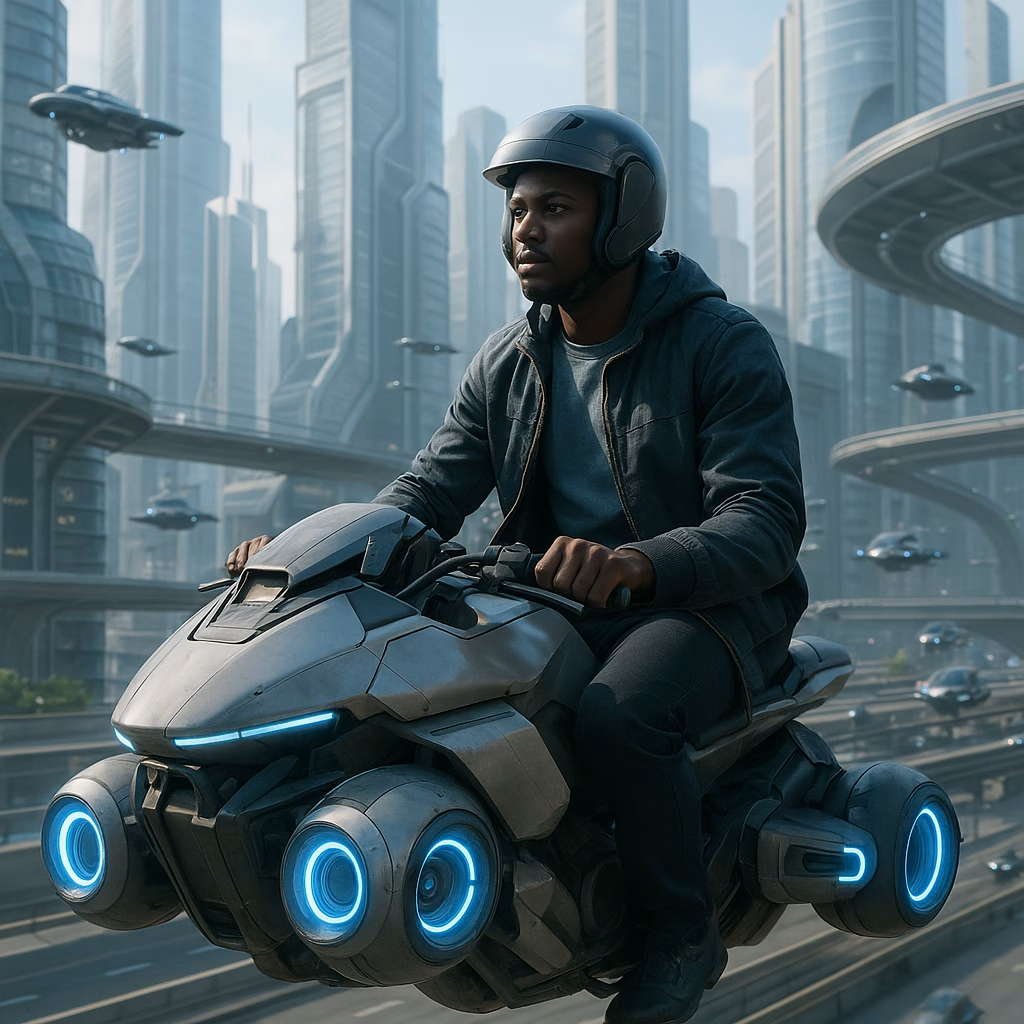
In today’s fast-paced urban lifestyle, commuting can feel like a full-time job. Traffic congestion, rising fuel costs, and time constraints are common struggles for city dwellers. Choosing the best mode of transportation for daily commutes is crucial—not only for saving time and money but also for reducing stress and minimizing environmental impact.
Whether you’re navigating Metro Manila, New York City, London, or Mumbai, this guide will help you find the best commuting solutions for your lifestyle. 🚗🚆🚲
1. Public Transportation: The City Classic
Why It Works:
Public transportation remains the backbone of urban commuting. Subways, buses, and trams operate on fixed routes and schedules, which makes planning your trip easy and predictable. It’s also one of the most eco-friendly and budget-friendly ways to travel.
Pros:
- Avoid traffic jams in dedicated bus lanes or underground trains.
- No need to worry about parking.
- Cost-effective for daily travel.
- Great for people working downtown or near transit hubs.
Cons:
- Can be crowded during rush hour.
- Delays and breakdowns can occur.
- Limited service late at night or in certain areas.
Tip:
Check if your city offers real-time updates. Apps like Google Maps, Moovit, and your local transit authority’s website can help you plan better.
Hashtags:
#PublicTransport #EcoCommute #SmartTravel
2. Walking: The Simplest and Healthiest Option
Why It Works:
If you live within a few kilometers of work or school, walking can be an unbeatable option. It’s free, improves cardiovascular health, and helps reduce your carbon footprint.
Pros:
- Completely free.
- Helps you stay fit and energized.
- Reduces stress and boosts mood.
- No fuel or maintenance costs.
Cons:
- Limited by weather and distance.
- May not be ideal in areas with poor pedestrian infrastructure.
- Can be time-consuming for longer commutes.
Tip:
Invest in a comfortable pair of shoes and check out walkability scores on sites like Walk Score.
Hashtags:
#WalkToWork #HealthyCommute #SustainableLiving
3. Biking and E-Bikes: Fast, Green, and Flexible
Why It Works:
More cities are becoming bike-friendly, adding bike lanes and shared bike programs. Whether it’s a regular bicycle or an electric bike (e-bike), cycling is a great way to beat traffic and get a workout.
Pros:
- Great for short-to-medium distances.
- Avoid traffic and take shortcuts cars can’t.
- Inexpensive to maintain.
- Zero emissions!
Cons:
- Weather dependent.
- Risk of accidents in car-heavy areas.
- Not always suitable for long distances or rough terrains.
Tip:
Cities like Amsterdam, Copenhagen, and Portland are biking paradises. Consider apps like Strava for route tracking and safety tips.
Hashtags:
#BikeToWork #EbikeCommute #GreenTransportation
4. Motorcycles and Scooters: Agility in the Urban Jungle
Why It Works:
For commuters looking to cut through traffic fast, motorcycles and scooters offer agility, speed, and fuel efficiency. They’re especially popular in densely populated cities in Asia and Europe.
Pros:
- Easier to park than cars.
- Faster than public transport during peak hours.
- Great fuel economy.
Cons:
- Higher accident risk compared to cars.
- Not ideal during rain or poor weather.
- Maintenance and safety gear costs.
Tip:
Electric scooters and e-motorbikes are now available in many cities, often through ride-sharing apps like Lime or Bird.
Hashtags:
#ScooterLife #MotoCommute #UrbanTransport
5. Carpooling and Ridesharing: Convenience Without Ownership
Why It Works:
If you prefer the comfort of a car but want to cut costs and emissions, carpooling or ridesharing is the way to go. Apps like Uber, Lyft, and Grab offer shared ride options.
Pros:
- Less stress than driving solo.
- Reduced fuel and toll costs.
- Social way to commute.
Cons:
- Can be slower due to multiple pickups/drop-offs.
- Surge pricing during peak hours.
- Less flexible than driving yourself.
Tip:
Look for carpool lanes or “HOV” lanes to save time during rush hour.
Hashtags:
#RideshareLife #CarpoolBuddy #SharedCommute
6. Driving: The Comfort of Control
Why It Works:
Having your own car gives you total control over your schedule. You can leave when you want, stop where you like, and avoid the unpredictability of public transport.
Pros:
- Comfortable and private.
- Useful for long or irregular routes.
- Can carry passengers, groceries, or equipment.
Cons:
- Expensive (gas, parking, maintenance, insurance).
- Heavy contributor to urban traffic and pollution.
- Time lost in traffic jams.
Tip:
Use apps like Waze to avoid traffic hotspots and get real-time driving routes.
Hashtags:
#CityDriver #DailyCommute #DriveSmart
7. Trains and Subways: Fast and Reliable
Why It Works:
In major metro areas, subways and commuter trains are often the fastest way to move across the city, especially during peak traffic hours.
Pros:
- Avoid road traffic entirely.
- Fast and frequent service.
- Environmentally friendly.
Cons:
- Can be crowded.
- Limited to areas with rail infrastructure.
- Service disruptions or delays can occur.
Tip:
Monthly passes often provide significant savings for regular commuters. Check your local transit provider’s site for offers.
Hashtags:
#SubwayLife #TrainCommute #UrbanRail
8. Water Transport: The Overlooked Gem
Why It Works:
Cities with rivers, lakes, or coastlines (like Bangkok, Istanbul, or Sydney) often offer ferry and water taxi services. It’s a scenic, relaxing, and traffic-free way to travel.
Pros:
- Avoid traffic entirely.
- Beautiful city views.
- Often less crowded than buses or trains.
Cons:
- Limited routes and schedules.
- Can be slower or weather-dependent.
Tip:
Search your city’s official transport site to check if water transit options are available.
Hashtags:
#FerryCommute #ScenicRoutes #WaterTaxi
9. Micro-Mobility: The Last-Mile Hero
Why It Works:
Electric skateboards, hoverboards, foldable bikes, and shared e-scooters are perfect for the “last mile” of your commute—like from the train station to your office.
Pros:
- Compact and portable.
- Reduces walking time.
- Fun and futuristic.
Cons:
- Safety can be a concern.
- Legal restrictions in some cities.
- Not suitable for all weather conditions.
Tip:
Look for shared micro-mobility services via apps or dock stations in your city center.
Hashtags:
#MicroMobility #LastMileCommute #UrbanTech
How to Choose the Best Mode for You
Choosing the best daily commute method depends on:
✅ Distance: Short trips = walk or bike. Long distances = train or car.
✅ Budget: Public transport wins on affordability. Driving tends to be costliest.
✅ Lifestyle: Want exercise? Try biking or walking. Need flexibility? Consider driving or a motorcycle.
✅ Environmental impact: Public transit, biking, and walking are the greenest options.
✅ Weather: Rain or extreme heat may limit walking or biking.
Final Thoughts
The best transportation method for daily commutes in busy cities isn’t one-size-fits-all. It’s about balancing speed, cost, comfort, and sustainability. In fact, mixing modes—like biking to a train station or walking part of the way—can be the smartest move.
So the next time you’re stuck in traffic or waiting for a late bus, think about switching things up. You might find a new way to commute that saves you time, money, and stress—while even improving your health and well-being.
What’s your go-to commute method? Share your thoughts and tips in the comments below!
Suggested Links:
- Google Maps: Directions & Transit
- Moovit Transit App
- Waze Navigation
- Grab Ridesharing
- Strava for Cyclists
- Walk Score
Suggested Tags:
#CityCommute #UrbanTransport #CommutingTips #SmartCityTravel #EcoCommute #DailyCommute #RideSmart #BikeToWork #WalkableCities #PublicTransit














